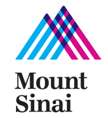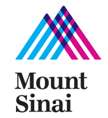Presentation title times new roman bold 45/48 points


Assessment and
Management of
Psychiatric Issues in
the HIV Positive Patient
Carrie L. Ernst, MD Assistant Professor of Psychiatry Icahn School of Medicine at Mount Sinai March 26, 2014


Disclosure
Author/royalties: American
Psychiatric Publishing, Inc
Speaker's Bureau (spouse):
AstraZeneca Pharmaceuticals


Objectives
• Understand the mechanisms and manifestations of
HIV infection of the central nervous system
• Describe the clinical presentations and differential
diagnoses of HIV associated psychiatric comorbidities
• Understand the central role played by psychiatric
issues in the assessment, presentation, and management of individuals with HIV
• Become familiar with special considerations in the
use of standard psychiatric treatment modalities in the HIV-infected population


Epidemiology and Overview
Source: Centers for Disease Control and Prevention. HIV Surveillance Report, 2011; vol. 23. http://www.cdc.gov/hiv/topics/surveillance/resources/reports/. Published February 2013.
Stages of HIV Infection
• Stage 1: No AIDS-defining condition + CD4 ≥500 cells/μL or
• Stage 2: No AIDS-defining condition + CD4 200–499 cells/μL or
• Stage 3 (AIDS): AIDS-defining condition or CD4 <200 cells/μL
• Stage unknown: No reported information on AIDS-defining
conditions & no information available on CD4 count or percentage
CDC. MMWR 2008;57(RR-10):1–12.
HIV Prevalence and Incidence,
1980-2010 in US
Estimated Number of AIDS Cases, Deaths, and
Persons Living with AIDS, 1985-2010: US and
Dependent Areas
1996 introduction Of HAART
Source: CDC, 2011
Estimated New HIV Infections in the United
States, 2010
New Diagnoses of HIV Infection among
US Adults and Adolescents by Race/
Ethnicity, 2008-2011
Source: CDC, 2011
Estimated Rate of New HIV
Infections, 2010
New Diagnoses of HIV among Adults and
Adolescents, by Transmission Category,
2008-2011: US and Dependent Areas
Source: CDC, 2011
Estimated New HIV Infections
Among Heterosexuals, 2010, by
Gender and Race/Ethnicity
Proportion of New HIV/AIDS Cases among
US Adults and Adolescents, by Sex and
Transmission Category 2011
Source: CDC, 2011
Percentage of AIDS Classifications among U.S.
Adults and Adolescents with HIV Infection, by
Race/Ethnicity and Year of Diagnosis, 1985-2011
Source: CDC, 2011
Percentage of AIDS Classifications among U.S. Adults
and Adolescents with HIV Infection, by Transmission
Category and Year of Diagnosis, 1985-2011
Why HIV Psychiatry?
Psychiatric issues play a central role in HIV epidemic HIV as multisystem disease
CNS infection neuropsychiatric symptoms Psychiatric disorders as vectors of HIV
Psychiatric issues a/w worse outcomes HIV as chronic illness Neuropsychiatric side effects of treatment
HIV Life Cycle &
Drug Targets
HIV Life Cycle & Drug Targets
Antiretroviral Therapy: 1987
Zidovudine (AZT)
Antiretroviral Therapy: 2014
Non- Nucleoside
Protease Inhibitors
Nucleoside Reverse
Reverse Transcriptase
Atazanavir (Reyataz)
Delavirdine (Rescriptor)
Darunavir (Prezista)
Abacavir (Ziagen)
Efavirenz (Sustiva)
Fosamprenavir (Lexiva)
Didanosine (Videx EC)
Etravirine (Intelence)
Amprenavir (Agenerase)
Emtricitabine (Emtriva)
Nevirapine (Viramune)
Lamivudine (Epivir)
Indinavir (Crixivan)
Rilpivirine (Edurant)
Stavudine (Zerit)
Lopinavir/Ritonavir (Kaletra)
Tenofovir (Viread)
Combination Products
Nelfinavir (Viracept)
Tenofovir/Emtrictabine
Atripla (efavirenz,
Ritonavir (Norvir)
emtricitabine, tenofovir)
Zidovudine (Retrovir, AZT)
Complera (emtricitabine,
Saquinavir (Invirase)
Lamivudine/Zidovudine
rilpivirine, tenofovir)
Tipranavir (Aptivus)
Stribild (elvitegravir,
Abacavir/Lamivudine
cobicistat, emtricitabine,
Integrase Inhibitors
Raltegravir (Isentress)
Entry Inhibitors
Fusion Inhibitors
Dolutegravir (Tivicay)
Maraviroc (Selzentry)
Enfuvirtide (Fuzeon)
Elvitegravir (part of Stribild)
Arts and Hazuda, Cold Spring Harb Perspect Med 2012;2
HIV Infection of the
Central Nervous System
HIV Infection of the CNS
HIV invades CNS within hours to days via infected monocytes
(differentiate into macrophages)
Cell free virus also enters CNS by infecting endothelial cells of
blood brain barrier
Infected macrophages infect other cells in CNS by direct contact Neurons are not directly infected Get further CNS viral replication in microglia and macrophages Direct & indirect neuronal damage occurs
– Virally infected cells secrete neurotoxic inflammatory substances – Viral particles/proteins are directly neurotoxic
HIV prefers subcortical structures- 1st basal ganglia CNS is independent reservoir of HIV replication
Model of HIV-related Neuronal
Damage
Kaul et al, Nature 410: 988-994, 2001
Neuropsychiatric Syndromes:
HIV-Associated Neurocognitive
Disorder (HAND)
HIV-associated dementa (HAD)
– Acquired impairment in ≥2 cognitive domains – >2 SD from age-adjusted population norms – Caused by HIV – Marked impairment in ADLs
Mild neurocognitive disorder (MND)
– Similar to HAD except ≥1 SD from population norms
with some impairment in ADLs
Asymptomatic neurocognitive impairment (ANI)
– Same neurocognitive impairment as MND but no
impairment in ADLs
Neuropsychiatric Syndromes:
HIV Associated Dementia (HAD)
Motor Cognitive Unsteady gait/loss of balance
Poor visuospatial memory
Poor visuomotor coordination
Poor complex sequencing
Tremors/poor handwriting
Impaired attention/concentration
Poor fine motor skills
Impaired verbal memory
Affective Behavioral Apathy
Psychomotor slowing
Mania, new psychosis
Personality change
Social withdrawal
Risk factor for suicide
Epidemiology of HAND
Pre-HAART: up to 40% prevalence of
Post-HAART: HAD uncommon but
milder neurocognitive impairment common; 20-85% prevalence
CHARTER Study1
– HAD: 2% – MND: 25% – Any HAND diagnosis: 50%
1. Heaton et al, Neurology 2010; 75:2087-2096
Risk Factors for HAND
• Low current CD4 count • Nadir CD4 count • High plasma or CSF viral load • Anemia (?) • Co-infection with Hepatitis C • Extremes of age • IVDU • Metabolic & Cardiovascular factors
Rackstraw. Psychology, Health & Medicine, 16:5, 548-563, 2011
Screening for HAND
Assess neurocognitive function early in all HIV patients
Screen every 6-12 months if higher-risk patients, every 12-24
months in lower-risk patients
Screen immediately if evidence of clinical deterioration or major
change in clinical status
Many proposed brief screens
Neuropsychological testing if available or for selected patients
Use screens with clinical information & risk profiles
Assess adherence
Psychosocial history + functional assessment
HIV Dementia Scale
Brief but sensitive screening instrument (sensitivity 80%, specificity 91%, PPD 78%)
(6) Psychomotor speed (timed written alphabet) (4) Memory (recall of 4 words at 5 minutes) (4) Attention (antisaccadic eye movements)
(2) Construction (timed cube copy)
Score ≤ 10 indicates possible HAD Power et al. J AIDS 1995; 8:273–278.
Work-up for the HIV patient with
Neurocognitive Impairment
Thorough medical and neurological history
Developmental history
Substance use- past and present
Psychiatric assessment (depression, anxiety, PTSD)
Neurological examination
Laboratory studies: CD4 cell count, HIV RNA, RPR, HCV
Antibody, TSH, testosterone profile, metabolic panel, hepatic function tests, B12, folate
CSF Analysis
Modified from The Mind Exchange Working Group;CID 2013:56
HIV Dementia: Neuroimaging
MRI-T2 MRI-FLAIR
Management of HAND
Combination ARV therapy
Assess and improve adherence to ARVs
Must decide if brain penetration is a crucial
component in the design of future HIV therapy
Treat co-morbidities (Hepatitis C,
cardiovascular risk factors)
Monitor frequently, especially if higher risk
Management of HIV Dementia:
Antiretrovirals and CNS penetration
Increasing CNS Penetration
nRTIs Didanosine Emtricitabine Abacavir Tenofovir Lamivudine Zidovudine
Adefovir Stavudine
NNRTIs Efavirenz Delavirdine Nevirapine
PIs Nelfinavir Atazanavir Amprenavir/r Ritonavir Fosamprenavir Fosamprenavir/r
Saquinavir Indinavir Indinavir/r
Saquinavir/r Atazanavir/r Lopinavir/r
Tipranavir/r Darunavir
Other Enfuvirtide Raltegravir Maraviroc Elvitegravir
Adapted from Smurzynski et al AIDS. 2011 January 28; 25(3): 357–365.
Management of HAND: Adjunctive
Pharmacological Treatment
Minocycline
Cholinesterase inhibitors
Valproic Acid
Psychostimulants
Management of HIV Dementia:
Non-pharmacological
Simplify complex tasks (ex- drug regimens)
Use pill boxes, diaries, timers
Repeat information
Write out instructions
Educate caregivers and patients
Maintain orientation cues
Keep environment familiar
Structured routines and activities
Cognitive stimulation
Additional CNS Complications
Accompanying HIV Infection
Infectious: CMV, syphilis, HSV, TB,
toxoplasmosis, progressive multifocal leukoencephalopathy (PML), fungal
Oncological: Lymphoma, metastatic disease
Endocrine/Nutritional: thyroid, addison's, B12
deficiency, anemia
Drug intoxication or withdrawal
Antiretroviral medications and drug-drug
HIV-Associated
Psychiatric
Comorbidities
HIV and Psychiatric Illness: HIV Cost
and Services Utilization Study
• Nationally representative probability sample of HIV-
infected adults receiving medical care in US
• Screened for symptoms of MDD, dysthymia, GAD,
panic attacks, and illicit drug use and dependence within the past year
• 77.4% male, 49.2% white, 40.4% heterosexual
Bing et al, Arch Gen Psychiatry 2001; 58:721-728
HIV Cost and Services Utilization
Study: Results
NCS-R
(N= 9282)
1. Bing et al, Arch Gen Psychiatry 2001; 58:721-728 2. Kessler et al, Arch Gen Psychiatry 2005; 62:617-627
HIV Cost and Services Utilization
Study: Results
Risk factors associated with screening positive for a
psychiatric disorder:
• Age < 35 years • Caucasian • Living alone or with non-partner • Unemployed or disabled • Greater # of HIV-related symptoms • Illicit drug use or dependence (excluding marijuana) • Heavy alcohol use
Bing et al, Arch Gen Psychiatry 2001; 58:721-728
AIDS Healthcare Foundation
Retrospective Cohort Study
• N = 7834 HIV-positive patients receiving treatment in
ambulatory care clinics in California
• Any psychiatric condition: 53% • Any mood-related disorder: 23% • Any anxiety-related disorder: 16% • Any substance-related disorder: 19%
Parhami et al, AIDS Behav 2012
Depression and HIV
• Most common psychiatric manifestation associated with
• Prevalence: 18-81% • HCSUS: 36% MDD, 26.5% dysthymia1 • HCSUS re-estimation of data: 22% MDD, 5% dysthymia2 • Meta-analysis: 2x increased risk MDD in HIV pts3 • HIV+ women > men • ↑ risk if advanced disease, hx MDD, psychosocial stressors • Atypical features • Associated with poor ARV adherence and worse outcomes
Bing et al, Arch Gen Psychiatry 2001; 58: 721-7281
Orlando et al, Int J Methods Psychiatr Res 2002; 11: 75-82
Ciesla and Roberts, Am J Psychiatry 2001; 158: 725-730
Depression and HIV
Demoralization, Stigma, Isolation
Debility, disability
Depression
Cognitive Impairment
Direct cortical & subcortical injury
Pro-inflammatory cytokines
Cognitive Impairment
HIV/AIDS
Faster disease progression
↓ # and activity of NK & CD4 cells
HIV-Related Mortality in
Depressed Women
HIV Epidemiology Research Study (n= 765)
(log-rank test: P<.001)
Ickovics et al, JAMA 2001; 285:1466-1474
Mania and HIV
• Prevalence: 1-2% in HIV, 4-8% in AIDS
• Associated with CD4+ < 100, HAD, MCMD
• Unique Features of HIV-associated mania: Irritability > Euphoria
No history mood disorder
Chronic > Episodic
Higher rates of HAD
Later age of onset
No family history
Increased talkativeness
Mania and HIV
Increased stress
Direct CNS effects (cytokines, caudate)
Impulsivity/Risk Behaviors
HIV/AIDS
Cognitive Impairment
Anxiety Disorders & HIV
• Prevalence: 10-72%
• HCSUS: 15.8% GAD, 10.5% panic disorder
• Increase with illness progression • Pre-existing anxiety disorders exacerbated • Associated with: ↓ Adherence, ↑ Risk behaviors and
↑ Substance abuse
• May affect immune function
• PTSD a/w ↓CD4+, CD4+/CD8+, & NK cells • ↑ Cortisol ↓immune function • PTSD a/w disturbed regulation of HPA axis &
sympathoadrenomedullary system
Death/Dying preparation
Milestones Functional disability
Initiation of ARVs
Disclosure of HIV status
Onset AIDS-defining illness
↓ CD4 counts/↑viral load
Appearance of 1st illness symptoms
News of HIV positive status
Psychotic Disorders and HIV
• Can be primary or secondary • HIV prevalence among people with serious mental illness is
greater than that of the general population
• 2001 data: 3.1% prevalence (8x greater than general
• Schizophrenia is a risk factor for HIV • Poor adherence • Many barriers to medical care • Longer medical hospitalizations • ↑ suicidality • May decompensate upon diagnosis • More sensitive to extrapyramidal side effects of
1. Rosenberg et al. Am J Public Health 2001; 91:31-37
Substance Abuse and HIV
• Substance abuse ↑
risk for HIV transmission
• HIV Cost & Service
Utilization Study: 50% of HIV+ individuals reported drug use in past 12 mo
Bing et al, Arch Gen Psychiatry 2001; 58:721-728
Substance Abuse and HIV
• Poor adherence • Less likely to access HAART • Diagnosed at more advanced stage • More opportunistic Infections • High risk sexual and injection behaviors • Interactions with HAART • ↑ risk cognitive impairment/dementia
Substance Abuse & HIV: Effects on
Immune Function
• Cocaine: augments HIV replication,↑
permeability of BBB to HIV
• Alcohol: immunosuppressive; enhances HIV
infection of lymphocytes
• Opioids: ↑ ability of HIV to infect target cells;
Morphine inhibits CD8+ T-cell-mediated anti-HIV activity in latently infected immune cells
• Methamphetamine: may ↑ viral replication and
Additional Psychiatric Issues
Associated with HIV
Psychodynamic Themes
• Suffering as sign of weakness in face of adversity • Guilt over getting HIV • Guilt over infecting others • Anger at source of disease, oneself, God • Precipitous revelation of hidden sexual or drug abuse
behavior shame and self loathing
• Stigma leading to rejection or abandonment by others,
feel like lepers
• Some become hopeless and nihilistic and refuse tx
How Would You Differentiate Between Primary and
Secondary Psychiatric Disorders?
Secondary
• Personal history of similar
• No personal or family psych hx
• More chronic
• Family psychiatric history
• Neuro-cognitive deficits
• Fluctuating consciousness
• Neuro-cognitive symptoms rare
• Evidence of organ dysfunction
• Typical features
• Prominent neurovegetative
• Uniquely psychiatric symptoms
(ex- hopelessness, helplessess,
• Personality change
worthlessness, apathy)
• Temporal association
• Atypical Features • Age of onset >40 • Abnormal vital signs • Lower CD4 counts & higher VLs
Differential Diagnosis of Psychiatric Symptoms
in HIV Patients
• Direct CNS manifestation of HIV • CNS infections & malignancies • Endocrine/Metabolic disturbances • HAND • Vitamin Deficiencies • Drug intoxication or withdrawal • Cardiovascular or pulmonary disease • Medications
Neuropsychiatric Side Effects of
ARVs
• Efavirenz: 50% develop neuropsychiatric sx
Dizziness, headache, ↓concentration, confusion, insomnia,
nightmares, anxiety, amnesia, depersonalization, euphoria, depression, hallucinations, SI
• NRTIs:
Didanosine: anxiety, insomnia, seizures, confusion
Lamivudine: insomnia, mania
Stavudine: h/a, malaise, depression, mania, insomnia,
Zidovudine: h/a, malaise, insomnia, vivid dreams, AH
agitation, mania, confusion, depression
Management of
Psychiatric Disorders
in HIV patients
Effects of Mental Health
Interventions for HIV Patients
• Improved ARV adherence • Increased CD4 cell count • Decreased risky sexual behaviors • Decreased suicidality • Improved quality of life • Decreased medical complications • Improved prognosis (?)
iewed by Arseniou et al. Psychiatry and Clinical Neurosciences 2014; 68:96-109
Springer et al. AIDS Care 2009; 21:976-983
Pharmacological Considerations
for HIV Patients
• Psychotropic-ARV interactions
• Substrates, inducers, inhibitors of multiple CYP450 isoenzymes • Ritonavir is CYP3A4 & CYP2D6 inhibitor
• CYP3A4 substrates & inducers • CYP2C9 & 2C19 inhibitors
• Most psychotropics: CYP 2D6 & 3A4 substrates and/or inhibitors
• Increased or atypical adverse effects • Neuropsychiatric side effects of ARVs • Adherence (pill burden, cognitive deficits)
Reviewed by Gallego et al, AIDS Rev 2012; 14:101-11
Treatment of MDD Associated with
HIV: Antidepressant Efficacy
(paroxetine vs imipramine)
Himelhoch and Medoff, AIDS Patient Care STDS, 2005; 19: 813-822
Psychotropic-HAART
Interactions: Antidepressants
NNRTIs Fluoxetine and
Efavirenz may ↑ buproprion
fluvoxamine may ↑
NNRTIs (3A4, 2D6)
St. John's Wort may ↓
Nevirapine may ↓ fluoxetine (3A4)
Most SSRIs may ↑
PIs may ↑ trazodone,
duloxetine, venlafaxine,
PIs may ↑ most
mirtazapine, modafinil, &
stimulants (3A4, 2D6)
Potential for
Ritonavir may ↑ buproprion
serotonin syndrome
St. John's Wort ↓ PIs (3A4)
Novel Antidepressants
• Psychostimulants: may help depression +
• Testosterone: potential benefits for depressive
symptoms and fatigue in hypogonadal patients with AIDS wasting
• DHEA: may help milder forms of depression
• Modafanil/Armodafinil: Open- label & RCT data
for fatigue in HIV patients
Additional Effects of
Antidepressants in HIV patients
• Improved pain control (SNRIs)
• Improved sleep (mirtazapine)
• Improved appetite/weight (mirtazapine,
• Improved energy (stimulants, modafinil,
• Decreased nausea (mirtazapine)
Psychotherapy for Depression in
HIV patients
• Interpersonal psychotherapy • Cognitive behavioral therapy • Cognitive behavioral stress management group • Brief supportive psychotherapy
Use of Antipsychotics in HIV
Patients
• Appear to be efficacious but not well studied • More sensitive to extrapyramidal side effects • PIs may ↑ typical antipsychotics, aripiprazole,
quetiapine, risperidone, ziprasidone (3A4, 2D6)
• Pimozide contraindicated with PIs (cardiac)
• PIs may ↓ olanzapine (1A2) • In late stage infection, start low, go slow • Overlapping metabolic effects • Bone marrow toxicity with Clozapine and Zidovudine
Use of Mood Stabilizers in HIV
Patients
• Additive renal toxicity from lithium + tenofovir
• Lithium may improve neuropsychological function
• Data suggesting valproate increases HIV
replication in vitro (but not found in vivo)
• Hepatoxicity from valproate
• Lamotrigine effective in HIV-associated
neuropathic pain
• Avoid Carbamazepine
Psychotropic-HAART
Interactions: Mood Stabilizers
Valproate
Carbamazepine Other AEDs
Oxcarbazepine
Valproate may ↑ zidovudine (gluc)
PIs may ↓ valproate
CBZ ↓ PIs (3A4) PIs may ↓ lamotrigine
PIs ↑ CBZ (3A4) (gluc)
CBZ ↓ maraviroc
Use of Sedative/hypnotics in HIV
Patients
HIV patients more sensitive to side effects
Limited data examining benzodiazepine efficacy for anxiety treatment in HIV
Most sedative/hypnotics have extensive CYP3A4 metabolism
Decreased benzodiazepine and non-benzodiazepine hypnotic clearance when administered with PI
Midazolam & triazolam contraindicated with PI or efavirenz
Lorazepam, clonazepam preferable
Helpful Resources for Drug-Drug
Interactions
Other Aspects of Psychiatric Care
for HIV Patients
• Therapeutic relationship
• Care coordination
• Treatment adherence
• Health education
• Prevention of high risk behaviors
• Coping with disability and chronic illness
• Work with families, friends and partners
• Integration of religion and/or spirituality
• Expanding support network
Conclusions
Among new HIV/AIDS cases, an increasing percentage
comes from unprotected heterosexual activity and higher-risk demographic groups
Common neuropsychiatric syndromes associated with
HIV include cognitive dysfunction, depression, psychosis, substance abuse and suicidality
All HIV patients should be screened for cognitive
dysfunction, regardless of virologic control
Sexual and drug use histories should be incorporated into
routine psychiatric evaluations and HIV testing should be considered as appropriate
Conclusions (continued)
Traditional psychotropic medications are effective
but require closer monitoring due to higher risk for adverse effects and drug-drug interactions
Antiretrovirals carry risk of neuropsychiatric side
effects and risk/benefit analyses are important
Medical, psychiatric and substance use treatment
services should be integrated with efforts directed at improving access to care
Skill-based risk reduction strategies designed for
the seriously mentally ill and cognitive impaired should be considered
Source: http://www.nuhealth.net/wp-content/uploads/old/our-services/primary-care/Assesment%20and%20managment%20of%20pyschiatric%20issues%20in%20the%20HIV%20positive%20patient.pdf
Giasson-Gariépy and Jutras-Aswad Addiction Science & Clinical Practice 2013, 8:22http://www.ascpjournal.org/content/8/1/22 A case of hypomania during nicotine cessationtreatment with bupropion Karine Giasson-Gariépy1,2 and Didier Jutras-Aswad1,2* Antidepressants can increase the spontaneous risk of hypomania or mania when used for treatment in affectivedisorders. When prescribed as an antidepressant, bupropion is generally considered to have a lower relative riskof inducing mood shifts. We describe the case of a 67-year-old man known for dysthymic disorder in remission onquetiapine and venlafaxine who experienced a first lifetime episode of hypomania with the introduction of bupropionSR for smoking cessation. To the best of our knowledge, this is the first case report of bupropion-induced mood shiftwhen used specifically for nicotine cessation in a nonbipolar patient. This case highlights the need for clinicians whoprescribe bupropion for smoking cessation to perform regular and systematic mood follow-ups during treatment.These follow-ups could even be more important when bupropion is selected to quit smoking in a patient alreadytaking an antidepressant.
257 Garden Street Roslyn Heights, NY 11577 Message from our Rabbinic Intern Schedule of Services Monday to Friday Very soon we will be celebrating Purim, which involves a number of special mitzvot. We read the Megillah both morning and night, we give morning: gifts to the needy, we give mishloach manot (two edible foods or drinks)









